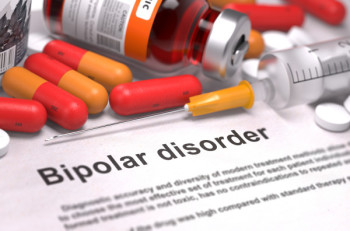Understanding Bipolar Disorder
Bipolar disorder (previously known as “manic depression”) is a mental illness characterized by extreme high and low mood swings. The “highs” (mania) alternate with “lows” (depression).
The highs and lows can last anywhere from just a few hours to days, weeks or months. In addition, not everyone experiences the same ratio of highs and lows nor are they in the same intensity.
Some can go three years or longer without experiencing the extreme highs and lows; others struggle with mood changes on a more regular or continual basis. These mood changes have nothing to do with life circumstances and cannot be “willed” away.
Understanding Bipolar Disorder – Manic
Manic episodes are characterized by an elated “up” mood, hyperactivity, decreased need for sleep, racing thoughts, excessive talking, irritability, increased creativity, grandiosity and/or excessive involvement in high risk activities. The person may act out sexually, spend money, engage in excessive goal-directed activity or use alcohol/drugs.
The manic episode can be so severe it includes a break from reality (psychosis) and an inability to function. It can also be “hypomanic” where normal functioning isn’t impaired and the symptoms are less severe.
Understanding Bipolar Disorder – Depressive
Depressive episodes are characterized by a “down” mood, low motivation, hopelessness, low self-esteem, loss of pleasure, sadness, decreased energy, insomnia or hypersomnia, decreased activity and sometimes thoughts of suicide. The person may have difficulty performing normal life tasks and may withdraw from normal activities.
During a mixed episode, the person experiences both mania and depression simultaneously or alternately at different times during the same day.
Understanding Bipolar Disorder – Impacts
There is no single cause for bipolar disorder. It tends to run in families leading researchers to believe there may be a genetic component, although, one twin can have the disorder, while the other does not. Researchers also believe some neurotransmitters, including serotonin and dopamine, aren’t functioning properly. Environmental factors, such as stress or a major life event, can also trigger the disorder.
Understanding Bipolar Disorder – Treatment
Treatment includes therapy and medication (primarily mood stabilizers sometimes along with anti-depressants and anti-psychotics). Bipolar patients often go off medication when they start to feel better. Family members find this aspect of the illness incredibly frustrating, since people with bipolar must be on medication to keep their moods stable.
Therapy helps them to manage the mood changes and to have increased self-awareness and self-management of their symptoms. Treatment success is as high as 80% and improved with early intervention.
Hospitalization may be required to prevent self-destructive, impulsive or aggressive behavior. It can range from a few weeks to as long as six months. Inpatient and outpatient treatment programs are available.
It isn’t uncommon for those with bipolar disorder to use substances to balance their highs and lows. Suicide risk is also significantly higher than in the average population.
Understanding Bipolar Disorder – Dealing With Bipolar Disorder
When dealing with someone with bipolar disorder, it is important to keep a few things in mind:
Education
- Educate yourself about the disorder. This will help you to recognize moods and to have reasonable expectations. Look up information on the National Alliance of Mental Illness or the Depression and Bipolar Support Alliance. You can also join a support group to interact with other family members and friends of people with bipolar.
It’s the Illness
- It’s helpful to remember bipolar is a mental illness when dealing with the person who isn’t acting normal. Detach from the moods by recognizing it’s the illness acting out not the person. This helps you to not take the behavior personally.
Have a Plan
- Have a plan to deal with the extreme moods. Know who to call and what to do. Find a good psychiatrist. Know when you need to call or go to the emergency room. It might be when a manic mood reaches a certain level, the person is unable to function for a certain number of hours or days, the person doesn’t get out of bed for a few days or anything else that would indicate that intervention is necessary.
Take Care of Yourself
- Take care of yourself. Don’t allow the disorder to rob you of the ability to live and enjoy your life.
Set Boundaries
- Set boundaries where they’re needed. You don’t have to allow the person with bipolar to do whatever he/she wants. If the person refuses to get treatment, you will have to make decisions about what you are and are not willing to do. You also have to be willing to allow the person to experience the consequences of the illness, especially when the person is unwilling to admit there is a problem.
It’s Not In Your Hands
• Remember you can’t fix this. You can offer support, be compassionate, and suggest resources, but you can’t change the fact your family member or friend suffers from this illness and you can’t make him/her get treatment. He/she has to want to get treatment and continue the treatment.
Depression is the most common mental disorder in the United States with 18.8 million individuals affected at any given time. Despite its widespread presence, depression is largely misunderstood because it’s hard to understand it if you don’t experience it. To learn more about the myths and facts related to depression click here.







